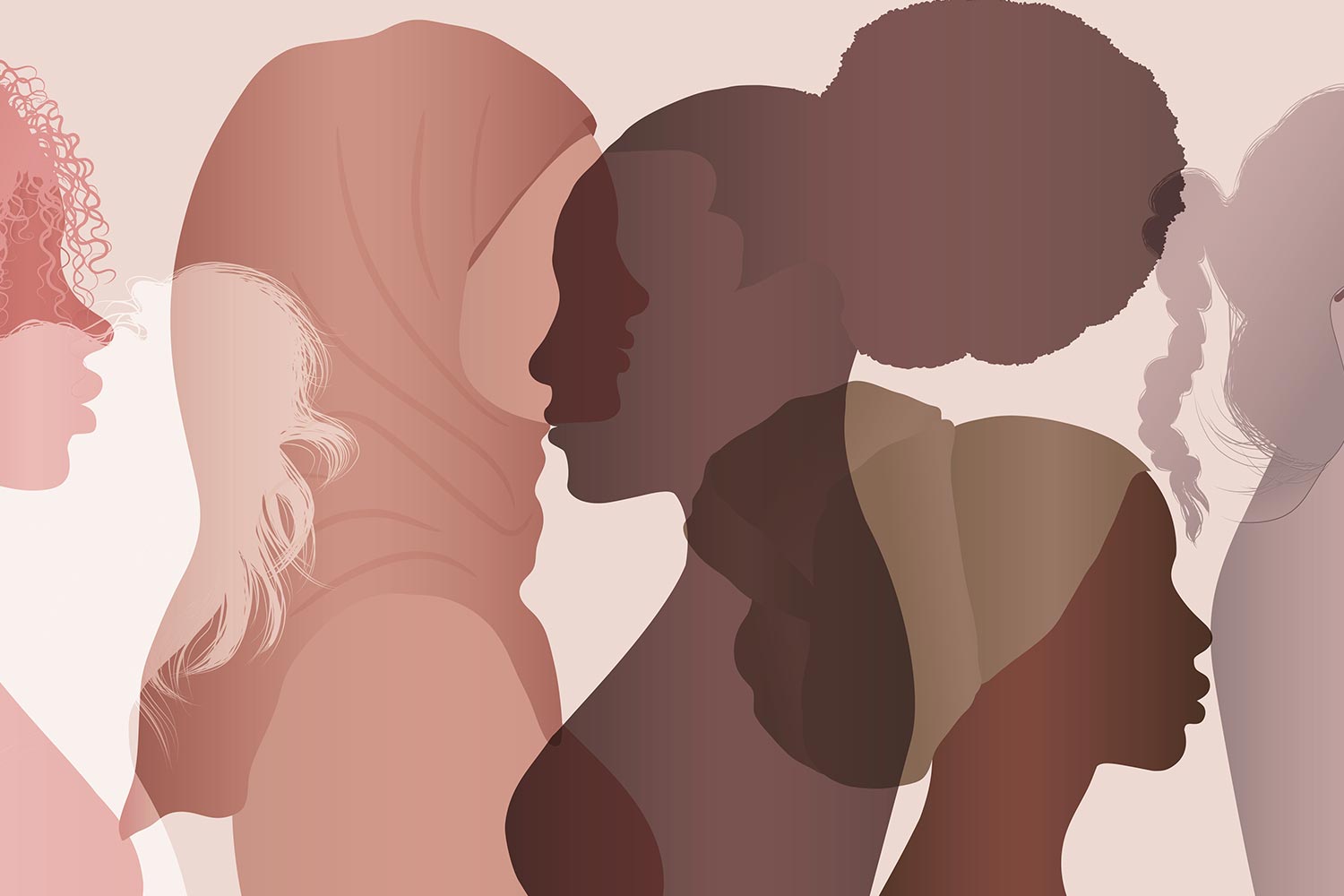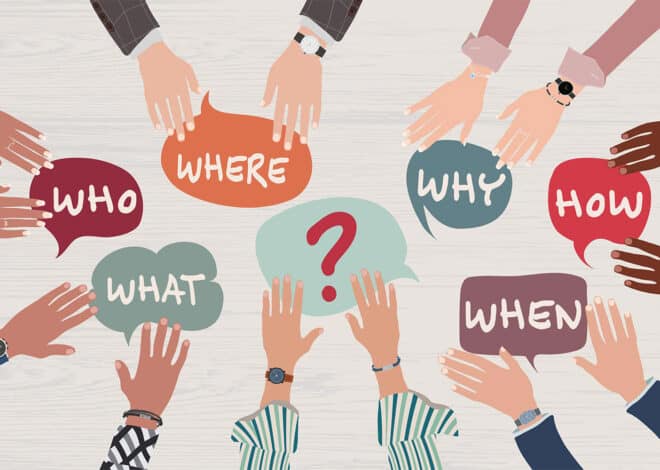Ten Things I Learned About Leadership from Women Executives of Color
Some valuable lessons drawn from listening, observing, and laughing with women executive directors of color over the years.

“Give us the chance to experiment, to make mistakes, to sleep at night, to take the time to nurture leaders within our organizations.”
While executive director of CompassPoint Nonprofit Services, Jan participated in the Women Executive Directors of Color network, conducted a study on nonprofit women executives of color, and experienced life through her lens as a Japanese American woman.
Here are some lessons I’ve drawn from listening, observing, and laughing with other executive director comrades over the years. Not all women EDs of color will agree with me of course…
1. Note to funders.
Give us (unrestricted) money. Give us the chance to experiment, to make mistakes, to sleep at night, to take the time to nurture leaders within our organizations. At one meeting of about 30 women executive directors of color, we talked about what we might ask for as a group. Should we ask a foundation for a special speaker? For a weekend at a retreat center? For a facilitator? For tuitions to expensive leadership development programs? After a long pause, one woman spoke up: “Give us money.”
One of the biggest challenges that leaders face is responding to various constituencies, and nonprofit leaders work hard to manage funding to do so. Working with restricted grants and government contracts is like having 15 part-time jobs — with each employer designating which of your expenses your salary can be used to pay for.
To support leaders you believe in, invest in our organizations. The tool we lack for exercising our leadership skills is so often money: to give raises, to hire a COO or a development director, to spend time in community leadership roles, to investigate opportunities, to write, to meet with government officials… in short, to lead.
2. The strongest leaders have technical as well as soft skills, and have practiced them in the field.
Women leaders frequently share a generosity of spirit and soft skills like facilitation and active listening. But in those I admire most, that generosity and those soft skills are informed by hard-won technical skills and by firsthand experience at the street level.
They have handled kids who are out of control, then turned around and advocated for them. They have fired people for using drugs in a drug counseling center.
They practiced law before working in a housing organization. Hard-won skills show, whether in social work, finance, science, community organizing or nursing.
“Try not to be a success,” said Albert Einstein; “try to be of value.” Two lessons for young people who want to be leaders: study biology or finance first (rather than leadership or ethics), and get field experience.
3. Leadership lingo is tolerated by real leaders, but less frequently embraced.
Theories, models, and programs on leadership abound, but are often academic, paternalistic, corporate, pseudo-religious, or even out of pop psychology. Many days it seems like the language of yet another world to be navigated.
One long-time woman executive director of color went to a leadership development conference and commented, “They were almost all young and white and I had no idea what they were talking about.” Women executives of color respond best when leadership language is direct, practical, applicable, and relevant.
4. Being a woman of color is both an asset and an obstacle to success.
Being a woman of color is both an asset and an obstacle to success, and leaders focus on the positive. The assumption is that being a woman of color is about facing obstacles. A study of women executive directors of color showed that women executive directors do face obstacles related to gender and race, but that there are advantages as well.
For organizations that serve people of color, an executive director from that same community is clearly an asset. Such executives quickly gain trust from staff and constituents, and they are well-positioned to represent their organizations to the broader community.
Especially for women of color who lead mainstream organizations, their rarity can be turned to advantage. “I work in the environmental field,” said one. “I tend to stand out.”
For me, the lesson is that race, gender, and age (like any attribute, for that matter) brings with it advantages and disadvantages. “Something offensive to me as an African American hits me every time I walk into the school district building,” comments one leader.
But rather than focus on negatives, successful leaders figure out how to make every attribute work for them. This same leader adds, “Being African American, I know how to deal with them and get what I need for my families.”
5. When we observe leaders, there’s a lot we don’t know.
At a meeting with a foundation, I remember another nonprofit executive — a white man with an MBA — who brought useful insights into the discussion that he had gained from his dinner the night before with his wife and her co-workers at a think tank.
At the end of the meeting, I chatted with a woman executive director of color. She was struggling to take care of her nephew who she had recently taken in because her sister was on drugs.
The juxtaposition reminded me of two realities: that we never know what personal lives lie behind the professionals we know, and that people from low income families often bear responsibilities unseen to their professional colleagues.
We want to value both theoretical insights and life experience — each more easily accessed by some people than others. How do we bring both into our work?
6. Over-hiring is a danger both to organizations and to leaders.
But it’s not always easy to tell when that’s happening.
Among the women executive directors of color we’ve encountered are some who have been hired into jobs beyond their capabilities.
Perhaps the board, in a hurry to hire, let hopeful thinking about a young, inexperienced candidate cloud their judgment. Not only do such over-hired executives often disappoint their organizations, their careers and achievements can be hurt.
One foundation executive — herself a woman of color — commented about a young woman of color who was looking for a job: “She was in over her head on her last job, but now she’s been spoiled into thinking she can move up from there.”
7. Under-estimating young talent is also a danger.
At a very early get-together of women executive directors of color, one of the participants was 19-year-old Lateefah Simon, three weeks into her job as executive director of the Center for Young Women’s Development. “You could be getting set up to fail,” we older executives told her. One even suggested she quit right now. Seven years later, still on the job, she was awarded a MacArthur Foundation “genius” award for her work.
On the Rise, CompassPoint’s study of women executive directors of color, showed that a remarkable 43% were hired from within the organization — compared to 36% of executive directors in general. One possible reason: when board members have had time to become comfortable with a woman of color, they are more likely to hire her than they would be to consider someone of comparable experience they don’t know.
8. Listen to all the advice, and keep your own counsel.
Leaders get a lot of advice. From everybody. One of the benefits of working in a nonprofit is “continuous access to free (and unsolicited) advice from management experts in business and government.”
We might add: “And from people in foundations, government, and leadership development programs.” And a lot of this advice is so abstracted it is inadvertently patronizing. “Be bold.” “Take risks.” “Focus on outcomes.” “Trust yourself.” One executive commented, “Back when I was a journalist and sitting on boards I used to give advice to the executive director. Then I became one, and people started giving me advice like, ‘Keep your eyes on the prize.’ I realized how obnoxious I had been before.”
Learning from my colleagues, I try to accept every piece of advice into my heart as a message, no matter how trite and no matter who it comes from, as a truth for the moment.
9. Cultural competency includes working successfully with obnoxious people from privileged backgrounds and positions.
Not all people with such backgrounds — whether donors, foundation program officers, or others — are obnoxious, but some percentage are. It’s hard to be patronized by a young program officer whose life experience is limited to graduate school and volunteering in the arts if you’ve been working with tough kids for 20 years. I learned from women executives of color (and my father) that getting what you want demands the ability to work with many different kinds of people, as well as the ability to keep from aspiring to be like those people.
10. Leaders — and everyone — appreciate articles that are brief.
Jan Masaoka is former executive director of CompassPoint Nonprofit Services, a California-based nonprofit consulting, education, and leadership services organization. In that position she was named Nonprofit Executive of the Year by Nonprofit Times. She is now editor of Blue Avocado.
This article is adapted from a chapter in The Leader of the Future II, edited by Frances Hesselbein and Marshall Goldsmith, published by Jossey-Bass.cc
About the Author
Jan is a former editor of Blue Avocado, former executive director of CompassPoint Nonprofit Services, and has sat in on dozens of budget discussions as a board member of several nonprofits. With Jeanne Bell and Steve Zimmerman, she co-authored Nonprofit Sustainability: Making Strategic Decisions for Financial Viability, which looks at nonprofit business models.
Articles on Blue Avocado do not provide legal representation or legal advice and should not be used as a substitute for advice or legal counsel. Blue Avocado provides space for the nonprofit sector to express new ideas. Views represented in Blue Avocado do not necessarily express the opinion of the publication or its publisher.












Every one of these points is a gem. Thank you for making my morning and giving me things to think about for the months and years ahead.
As a leader who came up through the ranks, I had a vague appreciation for my mix of hard-earned technical skills gained at the front lines and relational / facilitative skills that where inherent, and able to grow as the hard skills / hard work earned me promotions.
Lesson #2 helped me to see this more clearly — thank you. And it better diagnosed for me why some of my peers who lack a hard skills development phase get their careers and their organizations stuck at times.
Wouldn’t it be interesting if executive leadership recruitment focused more closely on a candidate’s early work; if the absence of frontline jobs (menial, technical) was viewed as a red flag rather than neutral, unremarkable or unnoticed?
As an Executive Director and a woman of color I wholeheartedly agree with your points. Perhaps most importantly # 9, that we have to work with all kinds of people successfully to get what we want. Sometimes it’s a steep learning curve.
Thank you for your insights!
I am a white woman with over twenty-five years experience in the nonproft sector, and I concur with most of the insights in this article. Yet, as a mentor to a diverse group of young women, I am troubled that this article, like others in nonprofit sector literature, falls into stereotypes, as in #3 above, in which "white women," out of touch with reality, fail to provide "direct, practical, applicable and relevant" training that "women of color," with their "hard-won" experience "at the street level," yearn for. On behalf of the next generation of nonprofit workers, the next time a foundation asks us to fill in a staff race/gender chart asking us to show that we "represent the community we serve" I am instead going to report on the entire diversity of our staff – in ethnicity, gender, and the life experiences/skills that help us serve our community. For example, I worked my own way through the state university and was the first woman in my low-income family to earn a degree. My African-American female colleague comes from a privileged background and has an Ivy League degree. Which of us better "represents" the community we serve? The answer is that both of us do the best job we can, using our own abilities, and working together as a team. And I think that the results are pretty good.
I so appreciate this comment. An unfortunate but common, parallel situation occurs when boards recruit a few people of color with the (usually unstated) assumption that such people will connect the organization to a particular community. Similarly, an Asian American staff person may be terrible at connecting with Asian American clients.
I believe there is a good deal of unstated resentment against people of color with privileged backgrounds who are seen as automatically more qualified for jobs in social justice organizations (or other organizations) than a white person with a working class or low income background. It’s also true that race is a huge barrier in so many situations in our society to people reaching out, making connections, getting help.
A researcher I know said that when she studied people of color leading social justice organizations, she was astonished by how many of them had attended elite universities such as Harvard or Stanford and came from upper middle class backgrounds. Yet she did not publish this finding, partly because she didn’t have a large enough sample, and partly because she wasn’t sure that the implications would be understood.
These are just some of the nuances of race in this era that are going unexplored. Please help us at Blue Avocado by writing up your stories — or allowing us to interview you — anonymously if you so desire. Thank you. Jan
I went to an elite school, but I was encouraged to do so from one of the many "save the poor inner city minority youth" programs that emphasize attending elite schools as a way of breaking the cycle of poverty in our communities. I learned a great deal yet was subtly (and not so subtly) taught the importance of being part of the elite and that my existence is a counterpoint to dominant image of black people being lazy, uneducated, and poor. It went beyond simply wanting to get a good job to challenging stereotypes and "lifting as we climb."
Yet what we also pick up is a bit of "savior syndrome" or the underside of the talented tenth mentality, where we believe we know what’s best for our community even if what we want is rooted in elitism and disdain. This can certainly lead to a disconnect between us and the communities we serve who may look like us, but I dont want to say that simply because Im no longer poor I cant relate. Class trumps race thinking is no better than race trumps class. In other words, the representation of people of color from diverse upbringings is critical to our humanity simply because it is part of lives that isnt always told.
But how do we make this diversity significant in terms of social change work in organizations beyond "Can you relate to the poor black people we work with?" How do we determine what is enough "street cred" to say "yes I can relate"? Also, doesn’t this narrow the experiences of the people we serve by implying that the narrative of the poor is simple and easily mastered? For example, I grew up in a poor section of Brooklyn in the projects. If you put a black woman in my class who graduated from Harvard or a white woman who went to a state school I would gravitate towards the black woman while others may have graduated towards to the white woman. Isnt there room for both to accommodate the diverse experiences of those being served? Allison Jones allisonj.org
Allison, what great points, and beautifully put.
I agree with the original comment we’re responding too, that class background is a factor here. “Women executives of color respond best when leadership language is direct, practical, applicable, and relevant” threw me, a white woman from a blue collar background. I respond best to this kind of language too. I don’t believe that race or class – or anything else – should trump other parts of who we are (the point about what we don’t know about people is so important!), but class gets ignored a lot in these discussions. I’ve worked with young, privileged people of color who fit the “white” part of #3, with me in the “of color” role. And some of them, not recognizing their class privilege, have tried to “educate” me in things I know from experience that they don’t have a clue about. Argh!
I love Allison’s closing point. While volunteering with African American kids in a DC homeless shelter for three years, I saw lots of volunteers come and go. Those that stuck around the longest were from a mix of backgrounds: middle aged, working class black woman; young Jewish grad student; privileged Asian (Kazakh) immigrant woman; young white Mennonite woman; and me. Among those who came and quickly went were several African-American men and women, each of whom was clearly well-educated, though I couldn’t tell you their class background. Some subtly demonstrated the pity that I remember getting when I was in a program for low income kids. (You know when someone is there to “rescue” you.) Ultimately, the most effective volunteers were the ones who loved working with kids. I recognize the importance of black children having black adults working with them, and I often wished we had more African American volunteers, especially men. (The staff had more African Americans, including directors.) But I also know I made a connection to dozens of kids, proven each time they would be excited to see me on the street, even long after leaving the shelter.
I did enjoy reading the article, and I both saw myself in a number of points and learned new things from others. Thanks for the post, which I’ll be tweeting.
Tracy, thank you so much for these thoughtful comments. One of your points (that not only women of color are those who are turned off by "leadership lingo") was just driven home to me a couple of days ago at a conference. A young African American woman gave a brief presentation that was packed full of abstract leadership jargon. I had a mix of reactions listening to her. One reaction was remembering how jargon is often associated with generation and age. What is new thinking and new vocabulary for one generation is trite jargon for another. Another reaction was thinking that her mastery of this particular culture would serve her best at a foundation or as an academic rather than running a methadone clinic or an environmental health organization.
In every group of people there is a percentage that embraces new language and terminology and another than finds it confusing and offputting. You are right that this is not necessarily linked to race or even to economic background. Women who are executive directors are more likely to be in their 40s and 50s than in their 20s and 30s, and so perhaps I was inappropriately drawing a lesson from a generation of women executives of color, not from women executives in general.
Thanks for replying, Jan. I think you hit on a good point about types of organizations, and that we adapt to them. I’ve worked internationally; for small, grassroots organizations; for unions; for student groups; with Quakers; for doctors and many others in nonprofits. I adapted to new jargon and culture each time. Even with
I used to go from congressional lobby meetings to phone conferences with students planning to commit civil disobedience at demonstrations. The difference was like night and day! Even people who don’t think they use jargon usually do. And that cuts across all demographics. Young African American women I’ve worked with who deal with domestic violence issues use plenty of jargon, but they didn’t realize it until I’d ask for them to explain terms. Even the students wanting to risk arrest at protests have jargon. (But they’d cringe if they knew I’d said so!)
The problem you initially flagged was how jargon can leave someone out of the discussion, and that’s surely a sensitive point for women of color in a variety of settings. It certainly can be a class issue too, which is what I first encountered as a young human rights activist who was baffled by the way people I met with spoke (and dressed) in my early years. I still love that a colleague in Washington insisted that in coalition meetings we not use acronyms. That was a great way of showing respect to all who attended, making sure no one was left out. For what it’s worth, he’s a 60-something white male in a traditionally male field.
That said, when I’ve been a part of media trainings, especially when I worked on male-dominated national security and arms control issues, I saw that women of any age or background were more likely than men to speak in ways that would-be radio listeners or TV watchers would understand. It made me extra aware that we need a wide range of voices getting the word out about our respective issues. But that’s your whole point, eh? That we need to pay attention to what others around us need, to hear each other out, and to make room for each other. I appreciate your helping us do that!
I thoroughly enjoyed this article as an Irish American Executive Director of 10 years.
This was a most interesting article, and as an African American CEO for a small nonprofit, I most often find that the uphill battle for dollars, respect in the industry and getting the work done with little or less than little resources is the challenge and the opportunity. It not necessairly tied to the color of the woman fighting the battle. However, it is often tied to beaucracy, those who still harbor the “old boy/girl schools of thought”, and the endless barage of “do gooder folk” who think they are helping. Being a professional, nonprofit woman Executive Director/CEO is it’s own struggle regardless of your color. Which make #9 all the more accurate.
Thank you for your article and allowing me to participate in the dialouge.
I totally agree with the whole article.. especially on numbers 5,7 and 8.. -=Jhenni=-
This is a nice article with good comments, but I find all these lessons learned apply almost universally, not just to women of color. In my own diverse career in npos, government human services, and business I have constantly found that most are simply doing the best they can with the advantages and disadvantages of their situation. You never really know how well a person is suited to a particular job until you see them in it a while. A person can be a failure in one role or organization, and be successful in another situation which looks outwardly similar.
I am a 53 yr old WASP with a middle class background, and an MBA from a state university, so I am part of the privelged elite in those ways. On the other hand I have dealt with a serious chronic disease most of my life, so I get what many of the clients of my medical nonprofit are going through. I hope that people will evaluate me based on my actions and character rather than making conclusions on my demographics.
As a middle aged liberal white woman I notice how many white people want to distinguish ourselves from those other, not so liberal white people. My African American colleagues tell me that this makes them crazy because they hear or read these kinds of attitudes constantly. What is wanted is for us to use our privilege on behalf of people of color to confront institutional racism through policy and direct action, by listening to and believing what we are told: our experience is not the same. I came from a poor and abusive household but still enjoyed access based on my light skin and good looks that led to professional advantages. I had to lift some heavy loads but I know that if I were a darker skinned woman, my load would have been far far heavier.
My spouse and over half of my friends are people of color. One of the most useful things I can do is accept that I am white and use that advantage, however slight it may be at times, to fight for social justice and call out prejudice whenever the opportunity arises. Unfortunately, that is nearly every day I leave the house.
Well said my Sista-
Thank you for sharing.
thank you so much